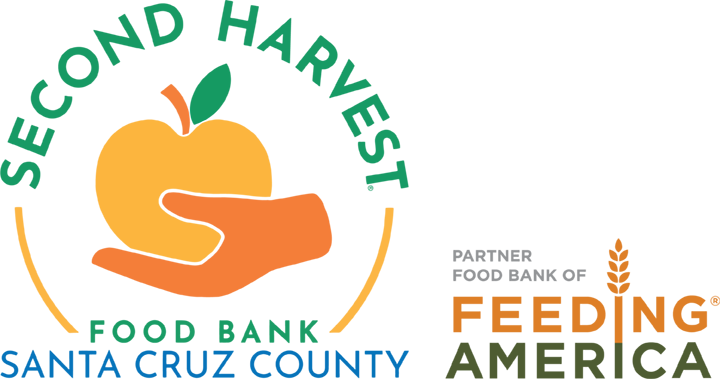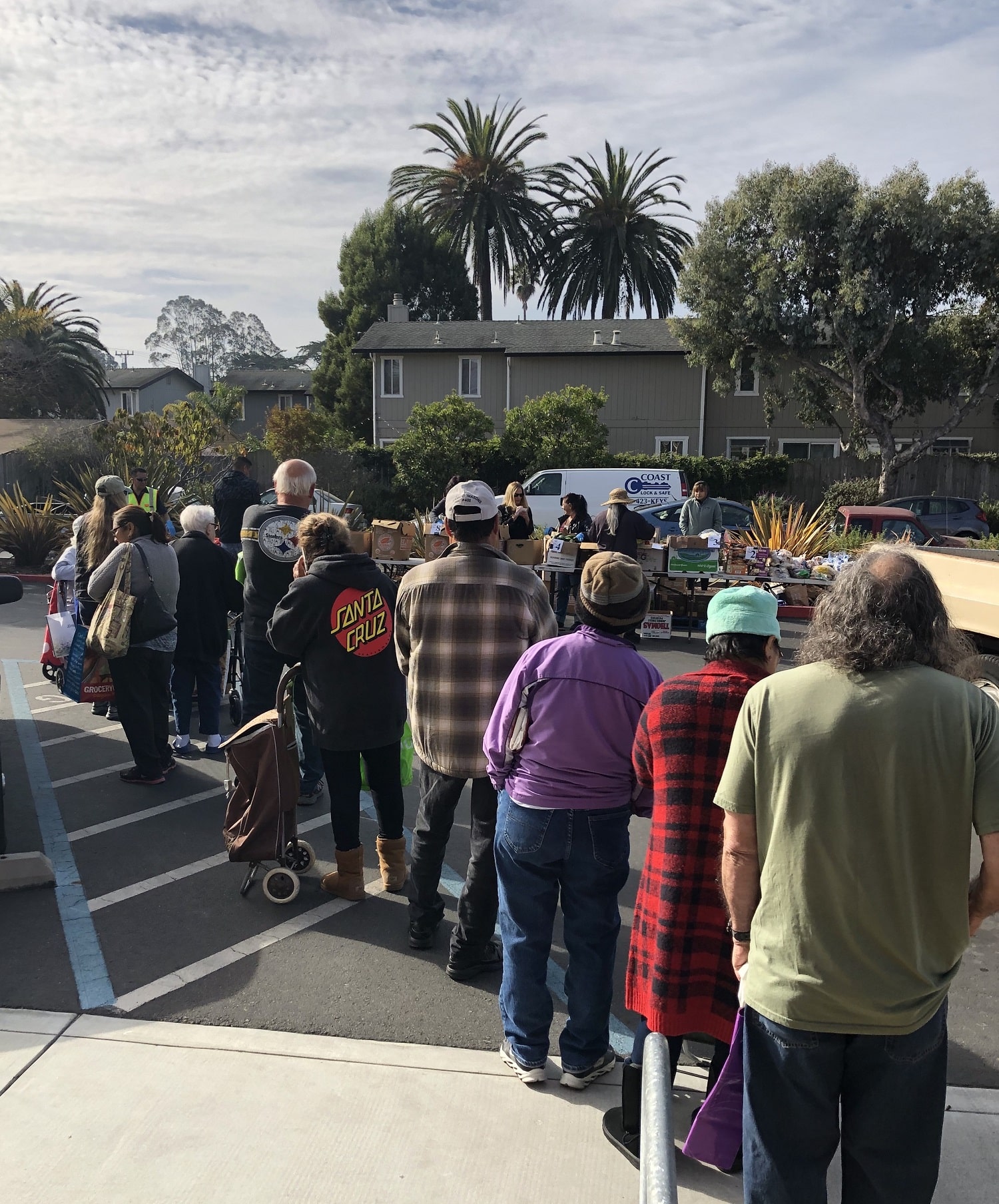by: Richelle Noroyan / Orginally published in the Santa Cruz Sentinel.
One of baseball hall-of-famer Yogi Berra’s memorable “Yogi-isms” is “It ain’t over till it’s over.” The pandemic-related challenges facing a lot of food-insecure people in Santa Cruz County certainly “ain’t over.” Second Harvest Food Bank continues seeing well-above normal demand and there are a lot of unknowns about what a new normal may be.
Numbers Tell The Story
Second Harvest has been consistently distributing slightly more than 1 million pounds of food monthly for the last year, according to Suzanne Willis, chief development officer at Second Harvest Food Bank.
”Prior to the pandemic it was about 650,000 pounds monthly. At the height of the pandemic, April/May/June 2020, it was up to 1.2 million pounds. The need among food-insecure people has slackened only modestly but remains consistent. We’re anticipating this higher level of demand for the next 18 – 36 months,” Willis said.
At the height of the pandemic, April/May/June 2020, it was up to 1.2 million pounds. The need among food-insecure people has slackened only modestly but remains consistent. We’re anticipating this higher level of demand for the next 18 – 36 months
The real concerns among food banks nationally is the news about employers desperately needing to hire. As COVID-19 restrictions are reduced, people who normally contribute to their food bank and donors, who are inspired to give during disasters, may feel less of a need to contribute support. However it’s clear the demand for food assistance remains and sustaining support is still critical.
Economic Headlines Tell More
California’s full re-opening in June masks continuing problems. While some people have been moderately or untouched by pandemic-induced economic effects, food banks are clearly facing continuing support needs by a larger number of people who are still harder-hit than before the COVID-19 shutdown. Continuing, above-normal support is essential to effective food bank operations for the large numbers of food-insecure families.
Key factors include retail price increases across many sectors, especially food and accumulated back rent and mortgages.
CNN Business reported on June 4: “Global food prices surge to their highest level in a decade.” Global food prices rose for the 12th month in a row in May, up nearly 40% year over year, according to the United Nations’ food price index. Average prices are at their highest point in nearly a decade.
A recently-published LA Times article points at an additional problem, how long it will take those who owe back rent to recover. Evictions and debt could spike when COVID-19 rent comes due (latimes.com).
Santa Cruz County’s employment stats only tell a part of the story. There is a large portion of our population who are under-employed, meaning they work part- or even full-time but earn less, often far less than what’s necessary in our high-cost-of-living area. The poverty line by federal government standard, is about $24,300 for a family of four, according to 2018 stats and its been rising consistently since then. That’s more than 15% of our population in our county that fits the federal definition for poverty. However, when considering the cost of living and the availability of social services, more than 23% of our county’s residents fall below a more realistic poverty line of $33,953 for a family of four.
Seasonal workers in agriculture, the people picking, packing and processing the healthy food we all eat, often fit into this category. So do many college students, retail workers and those working in the hospitality sector. A barista at the coffee shop, bank tellers, restaurant waiters and hotel staff are likely earning well below the poverty line.
With all the affluence visible in Santa Cruz County, the food-insecure population unfortunately isn’t shrinking. Food banks are one of the safety nets we can’t allow to break. In many cases, after people pay rent or their mortgage in this county, they don’t have money left for food. Accessing food at no cost lets people avoid evictions and foreclosures and remain healthier.
It ain’t over yet.
Richelle Noroyan is Corporate & Community Relations Director with Second Harvest Food Bank Santa Cruz County

